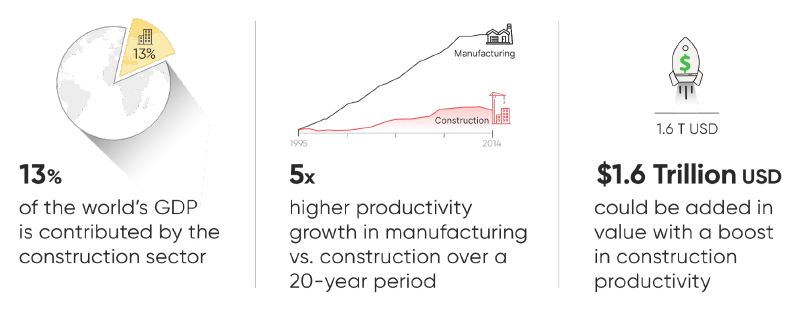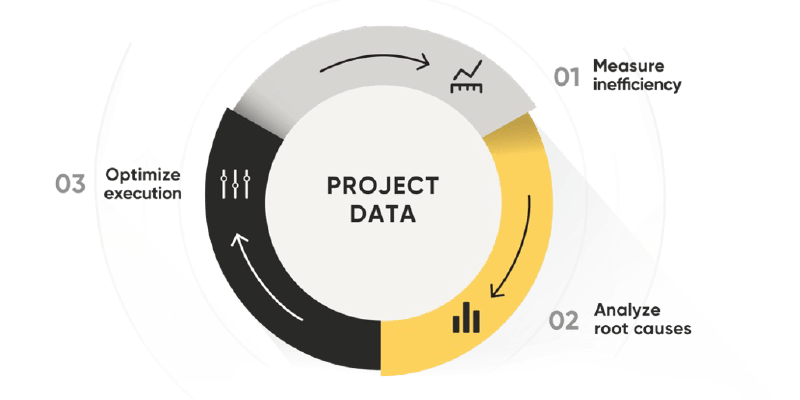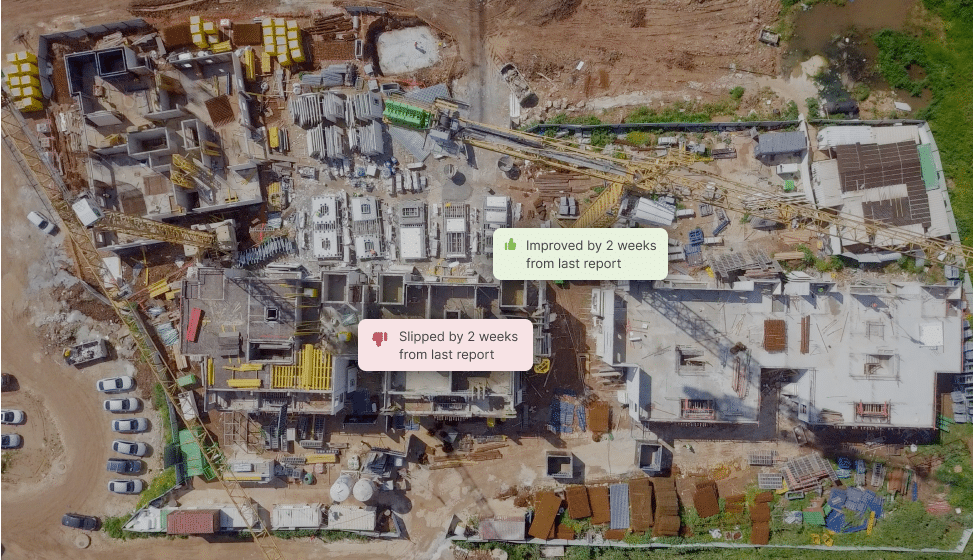How Performance-Driven Construction Management closes the industry’s productivity gap

The construction sector has long grappled with a significant productivity gap, often falling behind other industries – such as manufacturing – when it comes to adopting new technologies or different methodologies that could drive operational efficiency and overall growth. “Innovation is not an option but a necessity”, says Mark Tant, former Managing Director at Wates Construction, during a recent Buildots webinar, emphasizing the urgency to implement cutting edge technology in order to remain competitive in this rapidly evolving landscape.
Performance data as the key indicator for project success
Regularly hosting webinars in order to foster exchange within the sector, Buildots set up an expert table to share key insights, strategies, and real-life success stories from major companies already adopting a Performance-Driven Construction Management (PDCM) approach. PDCM is a response to all-too-common difficulties on the ground and a proactive methodology born from real-world pain points. It involves using accurate, regularly updated data and performance metrics to optimize existing workflows for reduced delays, better forecasting, and streamlined subcontractor management. It ensures actions are not just aligned with where a construction project is now, but also with where it’s headed, ensuring everything operates at the highest efficiency. “What I like about it, is that it is not just a theory”, Tant adds.
Outsmarting traditional project management practices
“I have a passion for productivity. A passion for improving things, optimizing things for a better construction industry overall”, continues Tant, highlighting the necessity of refining traditional construction management practices as we know them. “Unfortunately, in construction, we have only improved our productivity on average by 1% over the last 20 years. That's well behind manufacturing, which is roughly at 5%, and behind average economic productivity gains which are currently at 2.8%”, he says, stressing that this situation won’t be sustainable much longer.

“Yes, we cannot go on like this. We need to stop accepting that mediocre performance is acceptable,” agrees webinar speaker Andy Steele, Chief Strategy Officer at Buildots and former Chief Executive at Osborne Construction. ”In construction, we are accepting the unacceptable. We make excuses for ourselves so that we are able to wallow in, let's face it, a relatively mediocre performance. We need to change that mindset of ours.”

Data-driven strategies every superintendent should know
By embracing innovative approaches like PDCM, says Steele, construction managers can effectively and proactively address the challenge of overseeing countless project details and preemptively tackle them before they balloon into costly setbacks. “The truth is, we can only fix and optimize what we can see and measure”, Steele adds. Without a clear understanding of what's happening on site, we're essentially navigating blind. PDCM is about shining light on those blind spots. It's providing the tools to understand project performance at a granular level and make data-driven decisions that actually move the needle – before problems even begin.
Integrating those performance indicators into established routines, Steele summarizes, is the sole solution for any construction company that wants to operate with greater certainty.

A mantra for a new era of construction management
This is the mantra we need to embrace if we want to enter the new era of modern construction, concludes Steele by the end of the webinar: “Improvement needs precise measurement; Precise measurement needs reliable data. Let’s start improving our performance so we can start mitigating our risks”. This is what Performance-Driven Construction Management (PDCM) practices are all about: They have the power to foster a responsive, dynamic culture of collaboration, continuous progress, and certainty, finally closing our industry’s productivity gap.
If you've missed it, we've got covered. Click here to watch the full webinar on demand.




